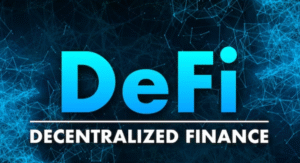$ENEL $SPGI $BTC
#Europe #EnergyTransition #ClimateFinance #COP28 #RenewableEnergy #Sustainability #ESGInvesting #EU #PolicyBrief #CleanEnergy #GreenEconomy #MarketAnalysis
Climate finance has become a highly contentious and pivotal issue as policymakers scramble to address the economic realities of the ongoing energy transition. The recent COP28 summit showcased just how sharp divisions remain, with developed and developing nations clashing over the size of financial packages needed to fund green transitions globally. In the U.S., controversy stirred when reports suggested that the Environmental Protection Agency had allegedly diverted billions of dollars toward activist organizations, a move designed to bolster long-term climate advocacy irrespective of administrative changes. Meanwhile, in Europe, a recent study by the Bruegel think tank undertook the hefty task of quantifying the financial requirements for the EU’s ambitious net-zero goals. Unfortunately, their findings underscore a troubling economic reality: the European Union may simply not possess the financial bandwidth to fund its energy revolution without major overhauls to its fiscal and energy policies.
Bruegel’s policy brief provides startling numbers that reflect the magnitude of transformation required. The EU would need to allocate an estimated €1 trillion annually to overhaul its energy infrastructure, subsidize renewable energy production, and achieve necessary decarbonization by mid-century. To put it into perspective, that figure is roughly equivalent to 7% of the bloc’s GDP. Key EU member nations such as Germany, France, and Italy—already facing fiscal strains from higher social spending and surging debt levels—would need to fund substantial portions of the initiative. Corporate giants like $ENEL, a leading renewable energy utility, can expect to play a considerable role, with increased capital expenditure and ongoing market volatility likely in the energy sector. The role of carbon credit trading platforms and sustainability-rating powerhouses like $SPGI also becomes more critical, making businesses and investors closely monitor financial strategies tied to ESG (Environmental, Social, and Governance) goals.
From an investor’s perspective, uncertainty looms heavy over Europe’s ability to sustain long-term funding for its green commitments, risking a potential policy backtrack or delays in implementation. Stock markets might see heightened sensitivity in energy sectors linked to renewables and utilities, where growing demand for clean energy infrastructure could translate into lucrative, albeit high-risk, investment opportunities. However, the financial impact isn’t confined to equities. Crypto markets like $BTC could see indirect effects as the industry’s energy consumption continues to draw regulatory scrutiny within Europe. ESG-focused initiatives in blockchain protocols or green mining processes may also gain traction, creating an intersection between sustainable energy narratives and decentralized finance. The intertwining of energy transition goals with monetary policies might lead to intensified calls for green bonds or carbon-tax-backed instruments, further complicating financial markets.
Policymakers within the EU must therefore strike a delicate balance between ambition and realism. The broader market consequences of Europe’s energy transition extend beyond macroeconomics; they have profound implications for equity valuations, global energy prices, and investment flows. If the EU fails to establish stable, multi-year funding mechanisms to bridge the gap, competing economic priorities could take precedence, delaying action on climate targets. This would not only hamper Europe’s leadership in global clean energy transitions but could also push certain industries toward more competitive regions like the U.S. or China, where energy and manufacturing policies are structured differently. For now, investors remain cautious, keeping a close eye on whether Europe opts for austerity-style measures, quantitative easing tied to sustainability, or fosters international partnerships to manage its daunting energy bill.











Comments are closed.